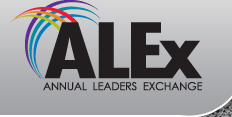SRFM? Yes, another ACRONYM!
 The planning, execution and partner collaboration processes of nearly all companies today are driven by a “plan”, itself typically part forecast, part performance target. Together, the plan and these core processes are at the heart of almost everything a company does – from MRP output, to commitments to customers and suppliers, to internal performance targets and the bonuses that depend on them, to the financial projections delivered to Wall Street.
The planning, execution and partner collaboration processes of nearly all companies today are driven by a “plan”, itself typically part forecast, part performance target. Together, the plan and these core processes are at the heart of almost everything a company does – from MRP output, to commitments to customers and suppliers, to internal performance targets and the bonuses that depend on them, to the financial projections delivered to Wall Street.The day to day activities that absorb the majority of working hours, however, and through which things ultimately get done, often seem to occur in a reality almost separate from the plan and the core systems that support it. The reason? Actual supply and demand rarely match the plan. Uncertainty, whether about supplier performance, market conditions, a delayed product transition, or one of the many other drivers of supply and demand, leaves companies facing actual circumstances that differ from those planned for. Fire-fighting ensues – e-mails, voice mails, renegotiations, spreadsheet work-arounds. Stress is placed on relationships, and performance fails to live up to expectations.
What can be done? We can continue to hope for and to work toward better forecasts and plans. But forecasts will never be perfect as long as there are factors that impact our business which are outside our control. Which is to say forever, particularly as more key activities are outsourced, and business becomes increasingly global.
We can also invest in being able to better react to actual events as they occur - to the actual circumstances that differ from the plan – as soon as we learn about them. But response lead times aren’t zero, and flexibility isn’t free. Supply chains that win invest in responsiveness, but also acknowledge and work to minimize its costs and liabilities. And they choose to operate at a point where the incremental cost of further responsiveness rises to the level of the value it delivers. Which isn’t infinite flex at zero lead-time – in most cases, it is far from it.
There is a solution to the plan vs. reality gap – one supported by systems and processes that enable advance planning for the range of supply and demand outcomes that can occur – and which enables efficient execution and effective performance management in response to the outcomes that actually do occur. It is called supply risk and flexibility management, or SRFM.
SRFM begins by acknowledging that trying to run a business in an uncertain environment, using systems and processes design to execute a fixed plan, is like trying to manage a construction project in quicksand. If the one thing we are sure of is the forecast will be wrong, using it as the foundation of our core systems and processes makes consistent and efficient performance equally unlikely.
The appropriate foundation for planning and execution in an uncertain environment is the range of possible future supply and demand conditions. Using “range forecasts” allows us to capture and utilize all we know about prospective supply and demand conditions – whether from historical experience, or from the market information currently available to sales, marketing, and procurement. In contrast, “point” forecast systems are only able to capture a single “best guess”. Information about the range of potential outcomes – clearly critical and valuable – is excluded from core systems as a result, forcing “informal” manual processes to attempt to cover it.
Two processes form the core of SRFM, both of which are built on supply and demand range forecast foundations. The first process quantifies the impact of supply and demand uncertainty on prospective future operating and financial performance. The second enables supply chain strategies to be defined and executed – both internally and with key supply chain partners – to manage the range of future performance outcomes and risk factors identified to best meet business objectives. These two processes, and the transformation of supply chain planning, execution, and performance they enable, are best illustrated with this example:
Consider supply management. Under traditional processes, negotiations focus on price. Lead times, along with flex terms that outline performance responsibilities in the event of inevitable forecast changes, may also be discussed. Data about how these terms impact future cost, value and risk is rarely available, however, nor are commitments that quoted terms will be honored under the adverse supply and demand conditions when they matter most.
In contrast, under SRFM procurement, teams enter negotiations armed with data that quantifies how specific price, lead time, and flex terms for the product or material in question impact future cost, availability and liability across the range of potential supply and demand outcomes. The data covers both key operating variables, such as inventory and service levels, and key financial variables, such as liability, margin and revenue, and summarizes expected levels, risks, and trade-offs across potential outcomes.
Drawing on this information, procurement identifies the specific lead times and flex terms for the material or product that best meet the company’s objectives. Procurement requests that suppliers provide quotes on commitments to perform to these lead times and terms. Suppliers respond with terms that summarize – in advance – their ability (and, where relevant, the ability of their suppliers) to honor the requested performance commitments across the range of potential future supply and demand conditions, and the costs, lead time, and liabilities they must incur to do so. Potential capacity constraints are surfaced in time to be efficiently addressed, and information about other key supplier costs, objectives and constraints can be evaluated and balanced against buyer objectives and benefits from the supply capabilities they enable.
Through the negotiations and counterproposals, the two parties identify the price, lead time and flexibility terms that best prepare the supply chain for the material or product in question to meet the business objectives of both firms across the range of potential future supply and demand conditions. The requirements and commitments in the final agreement clearly define who has committed to do what and get what across possible future outcomes, and on what terms. Rather than fire-fighting, execution over time is an efficient process of optimally leveraging the assets and options put in place to best meet actual supply and demand conditions as they unfold, regardless of what they may be.
Parallel benefits accrue within the company. Procurement can now put clearly specified alternatives for performance across prospective supply and demand outcomes on the table, gain consensus with other functional leaders on the alternative that best meets the company’s objectives, and commit to deliver the quoted performance across potential supply and demand outcomes with confidence. The discussion at a cross-functional planning meeting for a new product introduction may go something like this:
Cross-functional management team asks procurement: “Should we secure the more flexible supply? Why or why not?”Procurement’s SRFM answer: “With the additional flex, our availability increases to a level that will enable us to hit peak demand, at locked-in pricing and lead times. Our liability if the product launch underperforms is also reduced by 50%. However, the incremental cost of the additional flexibility reduces margins by 2%. We can commit now to deliver either type of performance risk and return. Marketing and finance, the choice is yours – which alternative do you think best meets the company’s objectives.”
Companies implementing SRFM today are realizing 5-10% improvements in performance by managing and executing – both internally and externally – SRFM processes able to address the uncertain reality of their business environment.
Now, we all have informal versions of the above...but does your organization have a formal SRFM game plan in place? Should it? Will it? What of it?

















